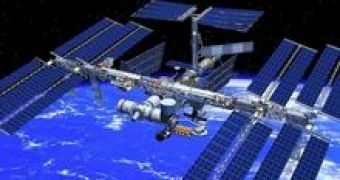There must have been quite a shock for the uptight Congressmen to witness a testimony given at?zero gravity. U.S. astronaut John Phillips, testifying live on video from the International Space Station, has been literally sent to the ceiling by one of the officials' questions.
Phillips became the first person to testify before Congress from orbit, answering questions about the view from 218 miles high and the medical breakthroughs likely to derive from his research.
Phillips spoke to the House Science Subcommittee on Space and Aeronautics as he cruised over the California coast. The only thing keeping him down were his feet tucked under a railing. As he spoke, he released his grip and floated up, bracing himself as he hit the ceiling.
The hearing aimed to offer the lawmakers some insights on the life aboard the half-built space station, where construction has been largely halted for the last two years with the grounding of the U.S. space shuttle fleet after the 2003 Columbia accident. The only ships arriving on the Space Station are the Russian supply ships, bringing vital supplies of oxygen, water and food for the two astronauts currently inhabiting it.
But there were other reasons as well. The Congress is debating a budget for NASA of more than $16 billion. In a tight budget year, some members of Congress want to move more money to other programs. The hearing was also a far cry from more contentious sessions in the past that focused on the station's cost overruns.
Nevertheless, the space station can prove to be very important for the future of science. For instance, astronauts on board the station have been using ultrasound equipment that is guided by ground-based experts. The technology could be very useful in the medical science, helping doctors treat people in rural areas or on battlefields without actually being there.
"Up here on the international space station, we are the experiment," Phillips said, then adding that NASA is learning lessons about how astronauts can survive in space, thus helping the development of the plans to return to the moon and, perhaps, Mars.

 14 DAY TRIAL //
14 DAY TRIAL //